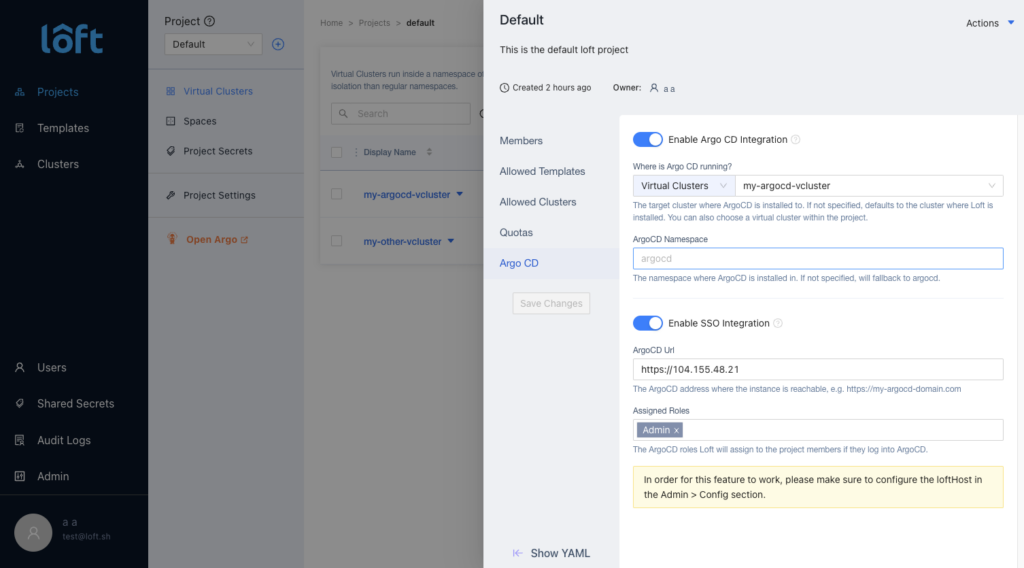Loft Labs Integrates Argo CD With Virtual Kubernetes Clusters
At the KubeCon + CloudNativeCon North America conference, Loft Labs announced it has integrated the virtual instances of the Kubernetes clusters it enables with the open source Argo continuous delivery (CD) platform.
The goal is to make it simpler for DevOps teams to create a virtual cluster that can be spun up and down by creating lightweight Kubernetes clusters that run inside the namespaces of a larger physical Kubernetes cluster.
Loft Labs CEO Lukas Gentele says more than 20 million virtual clusters have been created in the last 12 months using the open source vcluster software the company created as IT teams discover that not every use case for Kubernetes requires a dedicated cluster. Instead, IT teams are setting up a handful of physical clusters that can be easily partitioned using vcluster, he says.
One of the primary use cases for the edition of vcluster that Loft Labs supports is to create self-service development environments where developers can build, test and debug cloud-native software using an ephemeral DevOps environment. In addition to support for Argo, Loft Labs previously added integrations with the open source Terraform infrastructure-as-a-code (IaC) software as well as DevOps tools from GitHub.
Those integrations are enabling organizations to more easily embrace GitOps best practices that revolve around CD platforms running on Kubernetes clusters. That’s because Argo, for example, can now be deployed with a single click, notes Gentele. That’s critical as organizations look to strike a balance between the need to centrally manage DevOps environments running on Kubernetes clusters and the desire for autonomy among development teams that want to extend toolchains as they see fit for any given individual project, he adds. In fact, the only reason many development teams opt to manage their own Kubernetes clusters is to preserve their own autonomy—usually at the expense of being able to spend more time writing actual application code.
It’s not clear how many virtual Kubernetes clusters are showing up in pre-production environments versus running applications after they have been deployed. It is apparent that many of the benefits of virtualization can be applied to Kubernetes clusters similar to how virtual machines are used to increase server utilization rates. Virtual clusters, in effect, provide the added benefit of enabling IT teams to dramatically reduce the potential for Kubernetes sprawl because it’s now possible to spin up clusters with a multi-tenant environment. Most organizations are also more sensitive to those Kubernetes costs during the economic downturn. Rationalizing existing Kubernetes clusters represents an opportunity for IT teams to lower the total cost of IT in a way that simultaneously improves overall productivity.
One way or another, DevOps teams are being tasked with improving the overall application developer experience. Abstraction layers, such a vcluster, will inevitably play a critical role in enabling organizations to achieve that goal at a time when many developers are still not keen to manage IT operations themselves.





